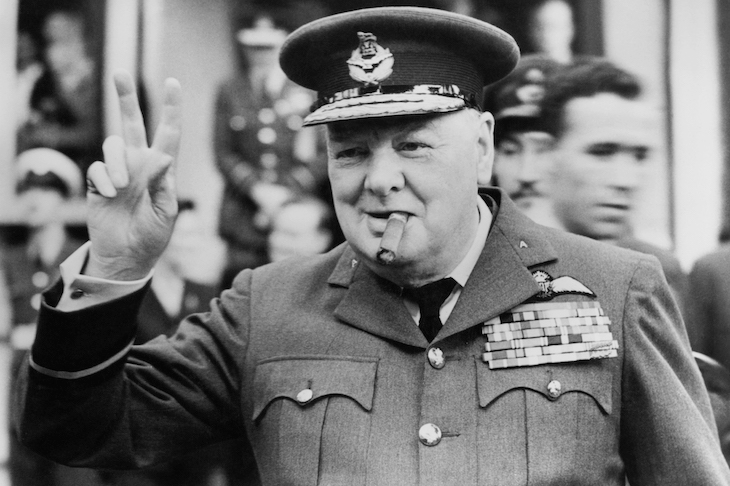The BBC programme The Coronation, on Sunday evening, was extremely interesting, principally, of course, because of the Queen’s appearance on it. But what was left out was notable. The programme gave a careful narrative, and some explanation, of the stages of the service and of the jewels and regalia (the Queen’s main supporting actors in the show). It never explained or even mentioned that the ceremony in which the anointing and the putting on of the crown were framed was the communion. It told us that, in 1953, the anointing had been considered too sacred a moment for the cameras to film. It did not tell us that the same rule applied to the Queen taking communion. This omission from the documentary meant that the shape of the service could not be understood. I wonder why it was left out. Perhaps it was because the wholly Christian (and specifically Anglican) nature of the entire thing was considered a slightly tricky subject. Perhaps it was just because there were no special telegenic communion jewels to be displayed and (for reasons stated above) no archive footage. Either way, the manner in which the service managed to embody virtually the entire political and religious history of England — I mean England more than Britain — was partially lost. I feel that what we did not see in the programme gives clues to what will be quietly dropped when the coronation of our next monarch finally arrives.
I was about to go and see the film Darkest Hour, when somebody who had just done so told me about a key scene. On 4 June 1940, Churchill leaves Downing Street for the House of Commons to make his ‘We shall fight on the beaches’ speech without knowing what he will say. Powerful persons are pushing him to try to make peace with Germany. He jumps out of his official car and gets the tube from St James’s Park to Westminster. On this one-stop journey, he quotes Macaulay’s ‘Lays of Ancient Rome’ to a lovely black man, who caps the quotation. Dear, patriotic citizens weepily beg Churchill to declare that we will fight on, so he decides that is what he will say in Parliament. Obviously, in drama, one must not succumb to ‘the tyranny of fact’, but if you know that Churchill did not travel by tube, that he had thoroughly decided what he would say, that he always prepared his parliamentary speeches pretty much word for word, and that only a madman would go from Downing Street via St James’s Park station to get to Westminster, you cannot suspend your disbelief. If the film’s suggestion that his mind was so malleable is correct, it would have gone ill with our island story if he had happened to find himself strap-hanging with a whole load of appeasers (who would not, by the way, have been difficult to find). I don’t think I’ll get to the cinema.
A phrase I see very often in emails is ‘Last few tickets remaining’. It is a rather touching example of fake news. It almost always means that there are really quite a lot of tickets remaining.
The Fundraising Regulator was set up because some charities were using questionable methods to get money out of the public — ‘chugging’, for example, and aggressive letters which bully the elderly into contributing. In its zeal, however, the regulator is now writing letters to all charities demanding that they send it money to assist its service and demonstrate compliance with its diktats. Charities which do not answer the letters are named and shamed in a list published by the regulator and are therefore interrogated by the media. I am told by friends in the charity sector who have received these letters that their tone is pseudo-legal and threatening. This is oppressive. A great many small charities do not raise funds from direct mail and suchlike methods at all, so they have no need of what the regulator calls its ‘interventions’ and see no reason why they should pay for its irrelevant services. Some resist; others cough up in the interests of a quiet life. This situation is piquant. The Fundraising Regulator is using the sort of strong-arm methods it was set up to stop.
I gather that one way in which the persecution of the Rohingya people was first advanced was by a decision of the Burmese government in the 1950s to insist on ethnicity being registered on official identity documents. This helped identify minorities to persecute them. Something similar happened in Rwanda in the days of Belgian colonial rule, when it was laid down that identity cards must state whether someone was a Hutu or a Tutsi. Such distinctions were, of course, part of the structure of the apartheid state in South Africa. It amazes me that we nowadays ask the ethnic question in our own census and other official records without thinking about this. Obviously our motives in collating the data are the opposite of the regimes I have mentioned, but history surely teaches that the formal, legal classification of citizens by ethnicity is a dangerous weapon for the state to possess.
A hazard of writing columns in a publication like The Spectator is that one’s readers understand the English language better than one does oneself. Some write to point out errors, and are usually correct. The usage which currently most exercises them is when people say ‘I am sat’ (or ‘I am stood’), where it should be ‘I am seated’ (or ‘I am standing’). I am not personally guilty of this sin, and so have been able smugly to agree (note the unsplit infinitive) with readers who lament it, but I am beginning to doubt whether it is a sin at all. One can say, ‘I sat him down and told him what I thought of him.’ Why, exactly, can one not be sat (or stood) oneself? Is it just a matter of usage, or does it break a rule of grammar? Or is it rather that being sat (or stood) has a different meaning than being seated (or standing), since it implies that others did it to one?







Comments